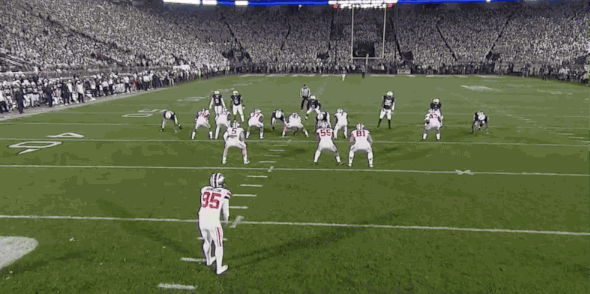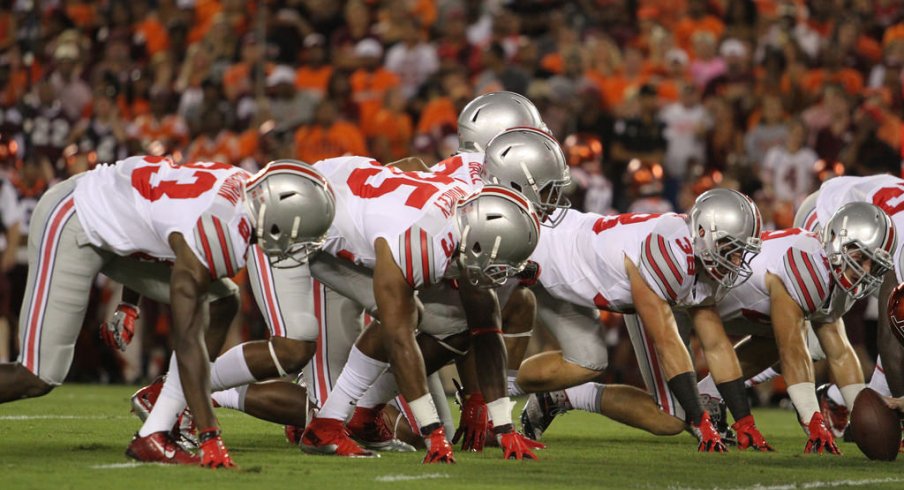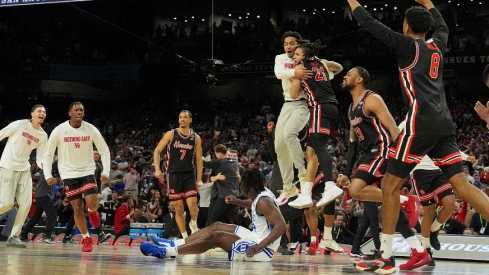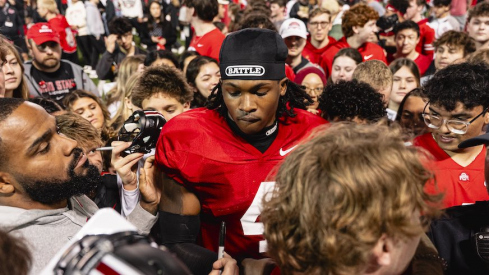"One year we blocked an NCAA record seven or eight in a year. We want to come after it. We want to be a punt-block team, so that kind of tells you about the mentality we have. Our best players are on it. We want to change the game.” - Urban Meyer, 2012.
Upon his arrival in Columbus five seasons ago, Meyer promised the Buckeyes' focus on special teams under Jim Tressel would evolve to fit his aggressive mentality. While his predecessor was known to favor the kicking game for field position purposes, willing to surrender individual possession battles in an effort to win the greater war, Meyer focused on his teams' ability to block a punt or field goal, and for good reason.
During his time at the University of Florida, the Gators went 16-0 whenever his teams blocked a punt. Overall, his teams in Gainesville blocked a total of 32 kicks in only 80 games, making game-changing special teams play as much a part of their identity as the zone-read.
Much of this had to do with the personnel Meyer had on hand, as he was able to send star players like Chris Rainey after the punter, knowing a future Olympic sprinter in Jeff Demps was waiting behind him to handle any potential return. Once back in Ohio's capital in 2012, Meyer still had similar talent available with 'freaks' like Bradley Roby, Philly Brown, and Devin Smith all appearing on the return units.
At first, it appeared as though nothing would change for Meyer's teams, as the Buckeyes opened their new coach's tenure in Columbus with six blocked kicks in the season's first two months, a feat Tressel's teams never matched. But after that blisteringly hot start, Ohio State's punt blocking abilities have seemingly disappeared, with the team in Scarlet and Gray only getting their hands on only six punts in the four and a half seasons since then.
Last fall, the only block came at the end of Penn State's opening drive in Happy Valley as Dre'Mont Jones got his paw on a low, line-drive field goal attempt despite not breaking through the line of blockers. To find the latest example of a Buckeye blocking a punt, though, we must go all the way back to November of 2015, when Curtis Samuel leaked off the edge to deflect an Illinois kick.
While the block set up the Buckeyes with good field position early in a scoreless game they'd go on to win, it wasn't exactly the fearsome momentum shifter that would make the Illini tremble every time they sent the punter back out. This change in philosophy has been the default for Meyer's teams going back at least three seasons, as evidenced by their previous two blocked punts before Samuel's, a Gareon Conley block at Rutgers:
...and an inexplicable block from Jeff Greene in the blowout of Kent State in 2014.

The last time the Buckeyes successfully blocked a punt they truly came after was in 2013, when Roby and Ryan Shazier raced to the Northwestern end zone with a few teammates in tow:
Which leads us to the question at hand: why has Meyer diverted from what was such a successful philosophy?
The easy answer is the Buckeyes have focused on setting up big returns instead of going after blocks. But while OSU has been mostly solid under Meyer in that discipline, Jalin Marshall's 51-yard punt return against the Hoosiers in 2014 is the only instance of Ohio State taking one to the end zone since 2012.
| Year | # of returns | avg. per return | National rank | Return TDs |
|---|---|---|---|---|
| 2012 | 27 | 10.37 | 36 | 3 |
| 2013 | 30 | 8.10 | 60 | 1 |
| 2014 | 40 | 11.28 | 18 | 1 |
| 2015 | 30 | 13.07 | 18 | 0 |
| 2016 | 27 | 5.15 | 105 | 0 |
The reality may be that the change had nothing to do with Meyer at all. Over the past decade, a proliferation of punting styles and formations have been introduced to the game, as spread formations, motions, and unique personnel groupings have made Tressel's favorite part of the game far more diverse and allowed the punting team to dictate the action on fourth downs far more than before.
Instead of seeing opponents line up in the same formation each week, as is mandated by the NFL, the Buckeyes see new styles and formations all the time, meaning more time in practice must be spent simply identifying these lineups and making the simple adjustment of ensuring the return team safely obtains possession.
The other change that has changed the punting game is the introduction of 'rugby' style punters like the Buckeyes' own Cam Johnston. While some don't find the pre-kick sideways trot endearing, its utility is unquestioned.

As Johnston showed in his four years in Columbus, imported punters like himself can kick the ball effectively in a number of ways, changing the angles for potential defenders looking to come after a block.
While this may seem strange at first, it's important to remember that when coming after a punt, players don't chase down the punter himself, but rather a landmark two to three yards in front of him, looking to deflect the ball just after it comes off his foot. But if you don't know where he'll be kicking from, how will you determine your landmark?
With enough film study and practice time, it's possible to find the creases in punt protection and predict a punter's landmark. But with limits on practice time and an increased desire to maximize player reps and energy, it seems as though Meyer is happy to allow this change in the game go by without holding on to previous habits.
But just as the game advanced to favor the team punting it, some team will surely find a way to get to the punter more effectively. And when they do, my guess is Meyer will be watching.



